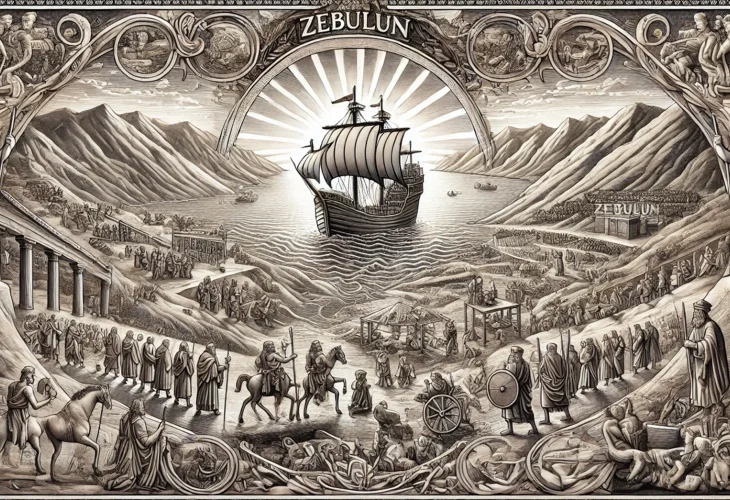Issues in the Bible
Zevulun by the Seashore: Uncovering the Biblical Geography Behind an Ancient Blessing
Why the tribe of Zevulun was called a “merchant by the sea” even though its land never touched the coast — hidden waterways, trade routes, and prophetic meaning from Bereishit to modern Israel
 Discovering Zebulun's maritime mystery.
Discovering Zebulun's maritime mystery.On Simchat Torah, we read Moshe's blessing to the tribe of Zevulun: “They shall draw from the abundance of the seas” (Devarim 33:19).
Similarly, in Yaakov’s blessing, Zevulun is told: “Zevulun shall dwell by the seashore; he shall be a haven for ships, and his border shall reach to Sidon” (Bereishit 49:13).
A careful look at the Book of Yehoshua's tribal maps however, reveals a puzzling fact: Zevulun’s territory never actually touches the sea.
A Blessing Without a Coastline?
Zevulun’s inheritance lay in the Jezreel Valley, stretching from the Kishon River in the west to Mount Tabor in the east. It was relatively small compared to other tribes — reaching as far as the area of Yokneam, which is indeed close to the Mediterranean, but not on the shore. The actual coastline, from Acre (Akko) to Haifa, belonged to the tribe of Asher.
Likewise, in the Song of Devorah (Shoftim 5:17), it is Asher, not Zevulun, who is said to have “dwelt by the seashore.”
Why then does the Torah describe Zevulun as a “tribe by the sea”?
The Curious Shape of Zevulun’s Territory
Scholars have long noted that Zevulun’s land has unusual extensions — one westward, along the Kishon River toward the sea near Yokneam, and another eastward, reaching the Horns of Hittin near the Sea of Galilee.
Topographically, this is strange. Zevulun’s main territory is a valley; why include narrow ridges and hill zones along the rivers?
The likely answer lies in Zevulun’s economic role. The tribe was blessed as a merchant people, partners with Issachar in trade and scholarship. Moshe's phrase “They shall draw from the abundance of the seas” suggests access to maritime commerce — not necessarily ownership of the coastline, but privileged trade routes through the lands of Asher (to the Mediterranean) and Naphtali (to the Sea of Galilee).
This arrangement, dependent on cooperation among tribes, may have been deliberate — fostering mutual dependence and peace among Israel’s regions.
A Lost Seashore? The Ancient Lagoon Theory
Professor Micha Klein, an Israeli geographer, proposed that in ancient times, a lagoon extended inland from the Bay of Haifa, reaching toward the northern Jezreel Valley. If so, Zevulun’s “seashore” may once have been literal — a shallow gulf or marshy bay where merchant ships could anchor.
Even for those who reject the lagoon hypothesis, geological evidence shows that the Kishon River Delta once covered a much wider area, flooding parts of the plain. Ancient Zevulun may have had access to navigable waterways, with trade vessels traveling between the river and the open sea.
“His Border Shall Reach to Sidon”
The Vilna Gaon (Gra) interprets Jacob’s phrase “his border shall reach to Sidon” as referring to a river bend shaped like a knee — symbolizing the curved border of Zevulun’s territory.
Midrash Rabbah also mentions that Zevulun’s land contained “Zabud d’Galila”, possibly referring to “the Galilean fish marshes,” indicating a region rich in aquatic resources — another echo of the tribe’s maritime connection.
From Blessing to Reality
Although modern Yokneam lies far from today’s coastline, ancient environmental and geopolitical conditions make sense of the patriarchs’ words. Zevulun, though inland, was deeply tied to the sea, through trade, proximity, and economic partnership.
Thus, Yaakov and Moshe weren’t mistaken prophets. They foresaw Zevulun’s destiny not just in physical geography, but in spiritual and economic vocation: A tribe that bridges land and sea, faith and commerce, uniting Israel through cooperation and shared abundance.

